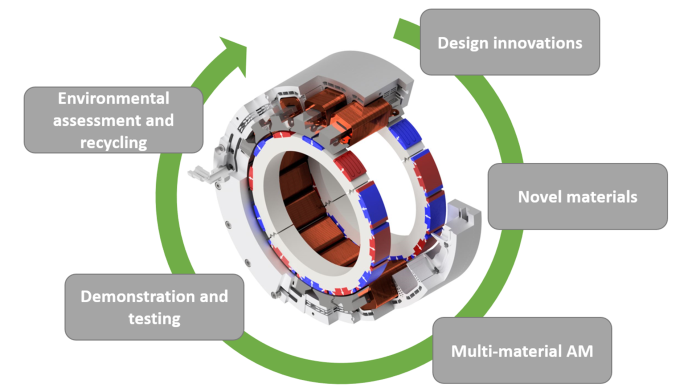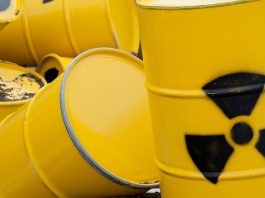Pasi Puukko, Senior Scientist and Project Coordinator at VTT, a Finnish-owned company with over 80 years of scientific and engineering experience, walks us through the MultiMag project and what it means for the manufacturing of electric motors.
In the modern day, we are surrounded by numerous electric motors, although we rarely pay any attention to them as long as they work properly. Dishwashers and washing machines, computers, heat pumps, drills, drones, and even toothbrushes often rely on electric motors.
Recently, electrification of mobility has become increasingly important, as it is considered one of the key approaches to reduce the consumption of fossil fuels and mitigate climate change and its consequences. Again, efficient electric motors play crucial roles, parallel to battery and other technological innovations.
Limitations of conventional manufacturing of electric motors
Different types of electric motors have been developed over the decades for a variety of purposes, but some trade-offs still must be made due to the limitations of conventional manufacturing technologies and the available materials.
A significant challenge is that the most powerful permanent magnets rely heavily on rare earth element (REE) materials, such as neodymium and dysprosium. As these materials are mined from just a few places and are vital for many other applications, there is a clear supply chain and economic risk related to REEs. Although electric motors can be manufactured without permanent magnets, they play a vital role in some motor types, especially high torque-density motors.
Due to the complex structure of electric motors, their manufacturing requires a lot of expertise. Several process steps can be automated using industrial robots and other automation, but this leads to rather rigid production structures which do not allow flexibility where needed. This inflexibility might hinder the adoption of new motor architectures.
Manufacturing-related constraints can also lead to more conservative solutions, for instance, higher weight and larger footprints of the machines than would be ideal. Constraints in manufacturing can also cause higher inertia of rotors and thus increased losses or reduced performance of materials due to microstructural changes.
Optimised structures and components
Additive manufacturing (AM), also known as 3D printing, offers interesting possibilities for manufacturing structures and components for electric motors. This is especially the case when considering Multi-Material Additive Manufacturing (MM-AM), where two or more materials are joined together by AM technologies.
Additive Manufacturing is defined as: “a process of joining materials to make parts from 3D model data, usually layer upon layer, as opposed to subtractive manufacturing and formative manufacturing methodologies.”1 Active parts of electrical machines comprise ferromagnetic cores, windings, and possibly permanent magnets.
The ferromagnetic cores are typically done by stacking insulated electrical steel sheets together, forming a laminated structure that effectively guides the flux with tolerable losses. Interestingly, as the nature of Additive Manufacturing resembles that of the laminated cores with layers of ferromagnetic and insulating material, MM-AM can offer an interesting alternative for producing these structures.
The traditional lamination reduces freedom related to stator geometry, and to some extent, could not be optimised to achieve full performance potential. MM-AM can combine stacked structures with macroscale complex geometries, allowing new designs.
In addition, design freedom does not apply only on the macroscale but potentially also on the microscale. From a magnetic performance perspective, ideal structure may not be a simple laminated structure, where each soft magnetic and insulating layer are just stacked on top of each other.
However, structures with 3D flux paths are not possible to manufacture with traditional laminations. Thus, using MM-AM, stacked structure can be designed anew, to better follow the actual magnetic flux paths inside the part, for example.
Laminated structures do not only benefit stators and rotors but they can also be used for permanent magnets, also known as segmented magnets. This approach can restrain the temperature increase inside the magnets, which can be very beneficial in neodymium magnets. In addition to structures, several potential benefits can also be achieved at the part level. Rotors for synchronous reluctance motors can be designed more freely to follow flux paths. The weight of moving parts can be reduced by reducing material from areas where it is not needed, reducing inertia, and also leading to lighter and smaller motors.
Although the potential of MM-AM is significant, several challenges need to be overcome before it can be used to its full potential. First, several AM technologies exist to produce multi-material parts from metallic and other hard materials, but they are not yet mature and flexible enough to be fully used for EM applications. Second, feedstock materials for MM-AM processes need to be developed to fulfil the functional requirements and the processability so that they can create strong joints with their counterpart materials. For end-of-life motors, we should be able to dismantle these joints and structures and recycle the materials back to use.
Improved performance and production
The MultiMag project has been set up to tackle these issues. The project goal is to develop a holistic approach to additively manufacture multi-material, multi-functional structures and components for electric machines, with remarkable advances in their performance, light-weighting, and lead time. At end-of-life, valuable materials can be effectively recycled.
To guide the project towards high impact, the consortium has defined three real-life use cases representing different electric motor types. During the first year of the project, the development has focused especially on modelling and simulation of these use case motors, to improve their performance. Based on simulation results, a considerable 40% weight reduction of permanent magnets and 30% of active motor components seems to be feasible.
Related to material and process development, material batches of permanent magnets, soft magnets, and insulating materials have been successfully produced and delivered for testing. Preliminary results of stacked bilayers of soft magnetic and insulating materials are promising in terms of magnetic properties and total losses.
The project will continue towards demonstrating and validating various components in an industrially relevant environment. The consortium sees clear exploitation potential in the results, not only to improve the performance of current motors, but to develop new products for existing and new markets. Motors that will use less REE materials and provide improved power-to-weight ratio, leading our way towards a more sustainable Europe.
References
1. ISO/ASTM 52900:2021
 Funded by the European Union. Views and opinions however those of the author(s) only and do not necessarily reflect those of the European Union or the European Health and Digital Executive Agency (HADEA). Neither the European Union nor the granting authority can be held responsible for them.
Funded by the European Union. Views and opinions however those of the author(s) only and do not necessarily reflect those of the European Union or the European Health and Digital Executive Agency (HADEA). Neither the European Union nor the granting authority can be held responsible for them.
Please note, this article will also appear in the 18th edition of our quarterly publication.









